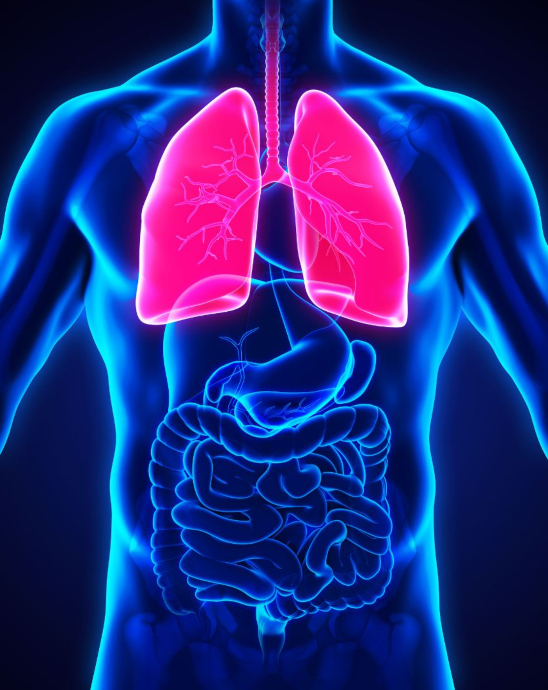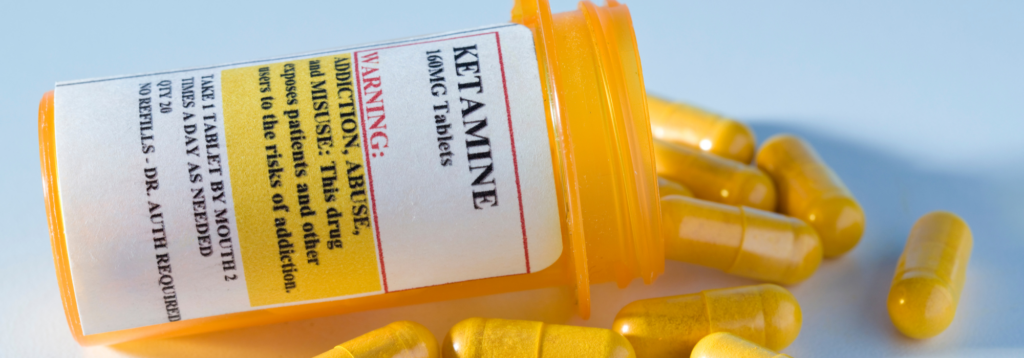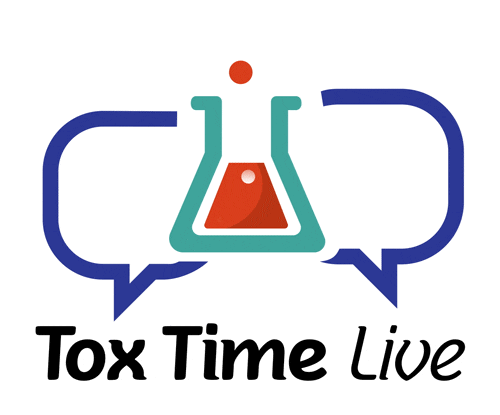What is Xylazine?
Showing: April 2023

By Canva© Studio
Xylazine is a sedative which causes analgesic and muscle-relaxing properties and is approved for veterinary medicine. Xylazine was first produced in 1962 by the Bayer company1. It has been studied for human use, but clinical trials had to be terminated due to severe adverse side effects, including central nervous system (CNS) depression1. Xylazine is not approved for human consumption, but it has been found as an adulterant being added to drugs, and it has been used in drug facilitated crimes to induce sleep. According to the DEA, there were 149 reported cases from federal and state laboratories involving xylazine in 2015, but that number jumped to 8,938 in 20211.

By Canva© Studio
Some individuals exposed to xylazine may not be aware of its presence. Xylazine has been found as an adulterant in white powder drugs. Primarily xylazine has been detected in heroin and fentanyl supply, though it has also been discovered in some stimulant supply such as methamphetamine and cocaine2. Other users actively seek out and use xylazine along with speedball, the street name for a mixture of heroin and cocaine, to mitigate some of xylazine’s negative effects. Xylazine containing products can be marketed on the street as tranq, sleep-cut, Philly-dope, or zombie drug.
Negative side effects of xylazine include CNS and respiratory depression, hypotension, hypothermia, high blood glucose levels, miosis, hypotension, and necrotic skin ulcerations that can lead to amputation if not treated. Additionally, because xylazine is not an opioid, naloxone is ineffective in the event of an overdose. The FDA issued a safety alert warning in November 2022 about the severe risks associated with the drug3.
Xylazine is not currently scheduled, though legislation was proposed in March 2023 to make xylazine a Schedule III Substance4. Congress has considered scheduling the substance prior to this legislation, but scheduling the drug would significantly impede the veterinary use of the medication5. Currently, the FDA is working to more strictly regulate the importation of xylazine and verify the legitimate veterinary supply6.
- https://www.deadiversion.usdoj.gov/drug_chem_info/Xylazine.pdf
- https://www.fda.gov/media/162981/download
- https://www.empr.com/home/news/safety-alerts-and-recalls/fda-restricts-unlawful-import-of-xylazine-containing-products/#:~:text=In%20November%202022%2C%20the%20FDA,and%20high%20blood%20glucose%20levels.
- https://abc7chicago.com/xylazine-effects-in-humans-congress-controlled-substance/13043734/
- https://www.avma.org/blog/congressional-offices-consider-making-xylazine-controlled-substance
- https://www.fda.gov/news-events/press-announcements/fda-takes-action-restrict-unlawful-import-xylazine
Sign up here to learn more and receive our newsletter on the latest updates with USDTL.

What is Ketamine?
Ketamine (ketamine hydrochloride) is a dissociative anesthetic with some hallucinogenic effects, meaning it distorts perceptions of sight and sound and makes the user feel disconnected from their environment and any pain.1 It has one-tenth the potency of PCP, and its original use is as an injectable, short-acting anesthetic for use in humans and animals.5 Ketamine can induce a state of sedation (feeling calm and relaxed), immobility, relief from pain, and amnesia (no memory of events while under the influence of the drug).1 It can be used for the induction (the transition from an awake to an anaesthe-tized state) of general anesthesia as a pre-anesthetic to other general anesthetic agents.2
Potential Therapeutic Use
Studies from Yale research labs showed that ketamine triggers “glutamate production,” which can prompt the brain to form new neural connections. This makes the brain more adaptable and able to create new pathways, giving patients the opportunity to “develop more positive thoughts and behaviors.” This was an effect that had not been seen before, even with traditional antidepressants.4 For the last two decades, researchers at Yale have led ketamine research by experimenting with using small doses of ketamine delivered intravenously in controlled clinical settings for patients with severe depression who have not improved with standard antidepressant treatments. In several studies, more than half of participants (who felt other antidepressant medications were ineffective) showed a significant decrease in depression symptoms after just 24 hours. The study states that ketamine “needs to be part of a more comprehensive treatment plan.”4 Studies are continuing to explore the possibilities of ketamine in therapeutic settings. It is not unlikely to assume that as ketamine gets clinically used, it will unfortunately also be under threat of being abused or misused.
Ketamine Misuse
Much like its intended use, ketamine can be misused recreationally for its ability to produce dissociative sensations and hallucinations. In 2022, the American Addiction Centers reported that nonmedical misuse is relatively low, with 0.7% of the U.S. population using it illegally.6
Since ketamine can be used in powdered form, it has been known to be snorted as a “party drug” at festivals or rave events.3 The street name for ketamine is “K” or “Special K.”
Ketamine has also been used to facilitate sexual assault because of its hallucinogenic effects known to make the user feel disconnected from their surroundings. A number of individuals have abused this drug or have been instrumental in others using this drug as a “date-rape” drug.1
Recreational use of ketamine can result in a number of internal complications including:
- gastrointestinal issues;
- depression;
- respiratory problems and;
- amnesia
Serious debilitating urinary tract symptoms are also seen frequently in those individuals who abuse ketamine.3 A study on ketamine in the National Institutes of Health predicts that ketamine toxicity and addiction “pose significant risks to a small segment of the population, and given increasing utilization, the prevalence of these phenomena is expected to increase.5” As ketamine use increases both recreationally and clinically, it will continue to be a substance worth testing for.
USDTL Testing
As an innovative leader offering alcohol and other drug testing, we understand the importance of being able to test when it is most feasible for your organization. We offer extended panel testing for ketamine in alternative specimens including hair, nail, and urine.
References:
- 3: https://clinmedjournals.org/articles/ijda/international-journal-of-depression-and-anxiety-ijda-1-006.php?jid=ijda
- 4: https://www.yalemedicine.org/news/ketamine-depression
- 5: https://www.ncbi.nlm.nih.gov/books/NBK541087/
- 6: https://americanaddictioncenters.org/ketamine-abuse

ToxTime: Choose the Best Test – An Overview of Advanced Alcohol & Other Drug Testing Options
Please join us for ToxTime with Guida Brown, Guided by Guida, discussion over detection windows for a variety of drug and alcohol tests.
Description:
Choosing the best test is determined by what information is sought. Testing of urine, blood, hair, or nails, among other substances, each serves a purpose, but the right test is needed for the results to be useful to anyone. During this free ToxTime presentation, Guida Brown of Guided by Guida will discuss detection windows for a variety of tests and how the results garnered can best be used. A recording of the presentation and a certificate of attendance will be available 24-48 hours after the completion of the webinar.
Speaker:
Guida Brown earned a bachelor’s degree in Journalism from Marquette University and a master’s degree in Management from Cardinal Stritch University; Guida Brown made the nonprofit sector in Kenosha County her career. She was the Executive Director of the Hope Council on Alcohol & Other Drug Abuse, Inc., for over 13 years, resigning from that position in June 2022. Prior to her tenure at the Hope Council, she worked as the Director of Human Resources and Training at AM Community Credit Union and Executive Director at Women and Children’s Horizons. She is the Principal for Guided By Guida, as well as a Substance Abuse Counselor, Fetal Alcohol Spectrum Disorder trainer, and Intoxicated Driver Program Assessor certified by the State of Wisconsin. She also serves as an adjunct member of the faculty at Concordia University, UW-Parkside, and Gateway Technical College.
A recording of the presentation and a certificate of attendance will be available 24-48 hours after completion.
Click Here to Watch the Webinar
- Drug Classes and Neurotransmitters: Amphetamine, Cocaine, and Hallucinogens
- Environmental Exposure Testing for Delta-8 THC, Delta-9 THC, Delta-10 THC, and CBD
- Bromazolam and Synthetic Benzodiazepines
- Winter Weather Delay Update
- Tianeptine
- Revolutionizing DUI Interventions: Wisconsin’s Breakthrough in Biomarker Testing for Impaired Drivers
- 3 FAQs You Should Know About Newborn Drug Testing
- The Brain Chemistry Behind Tolerance and Withdrawal
- March 2024 (1)
- February 2024 (1)
- January 2024 (3)
- December 2023 (1)
- November 2023 (1)
- August 2023 (1)


